Manchester International Festival: finding culture in the city
The 8th edition of the Manchester International Festival fills the city with art, performance, encounter & sound. It also sees the partial opening of Aviva Studios, the city’s newest arts centre which opens with a Yayoi Kusama inflatable installation. Elsewhere, the work of Ryan Gander, Tino Sehgal, Ryuichi Sakamoto & Risham Syed can be discovered, as Will Jennings finds.
Manchester is a city formed of a solid fabric of grand 19th
century industrial architecture. Once nicknamed Warehouse City, its heritage
is unmissable even if it is now punctuated by glass towers in a rapid
post-industrial reimagination of physical form and nurture of a new recognition
on the world stage. It is not only through architecture and image, but also a
project which uses culture deeply.
Of course, it is a city which has never been short of culture. It is, after all, where in 1844 Friedrich Engels wrote The Condition of the Working Class in England and met up with Karl Marx in Chetham's Library, was the backdrop for L.S. Lowry’s urban studies, was home to The Haçienda and an endless list of musicians, is a centre of television and radio production, and is a city which has won the football league 29 times. More recently, visual arts and contemporary culture is becoming more deeply embedded into the newly re-emerging city.
![]()
![]()
With its first edition in 2007, Manchester International Festival (MIF) has grown into a major creative arts biennial, taking over the city and turning it into a place of cultural production and presentation. Over the years it has featured new commissions from artists from across the visual and performance arts, including Gorillaz, Steve McQueen, Jeremy Deller, Kraftwerk, Olafur Eliasson, and Marina Abramović. Over the years it has appropriated and slotted into various parts of the city, from abandoned warehouses to urban space, as well as purpose built venues such as the opera house, theatres, and galleries.
The newly-opened 8th edition of the event is no different, with events across Manchester. However, it also uses a brand new venue, a purpose-built and enormous new HQ for Manchester International. It’s official name is Aviva Studios after a £35m ten year sponsorship from the insurance company, but Mancunians may stick to calling it The Factory or Factory International, names it held since its inception in 2014. Designed by Ellen van Loon, OMA Partner and lead architect, it is a multi-purpose and quite unique artistic space with a main hall of a scale to rival the Turbine Hall at Tate Modern and the Navate of Milan’s Pirelli HangarBicocca (see 00105).
![]()
The building will not fully open until later in the year, but MIF offers a sneak preview with an installation of inflatable works by Yayoi Kusama. The other-worldly medley of dolls, pumpkins, tentacles, and ambiguous dotted forms do a great job of both filling the 21m high space and impressing its scale, though it’s likely that future Factory projects will offer a somewhat deeper and nuanced experienced than this Instagram-friendly offer. Kusama is projected high up in the space, singing about darkness, depression, and mental instability, dialectically responding to the apparent joy of the psychedelia and pop below, but an element which will perhaps go unnoticed by visitors wowed by scale and colour.
![]()
![]()
![]()
figs.iv,v,vi
Mayfield Park, a new privately owned public greenspace which opened last September hosts a more subtle and nuanced work from artist Risham Syed and director Angie Bual. The River Medlock has been opened up and weaves through the site newly landscaped by Studio Egret West, who are also urban designers and lead architects for the wider 24-acre Mayfield mixed-use project which will grow around the park. The work, Each Tiny Drop, is a response to the Medlock, using it to explore collective memory, ritual, and shared ecologies.
Audiences can pick up a small clay pot, and into it collect water which has been brought to Manchester from the Soan River in Pakistan, channelled through a dripping sculpture. Once filled, it is taken on a journey through Mayfield Park, with soundworks emerging from planting and rockeries. The floating, haunting sounds – including a poem written by the artist’s father – resonate as the water is taken towards the final staging post, another sculpture which drips into a bucket, then lowered into the Medlock from where it continues its journey, leaving Mayfield Park, into the River Irwell, then the Mersey Estuary, the Irish Sea, and then beyond, to unknown places.
![]()
![]()
![]()
Not all the components of MIF are so responsive to urban localities, though projects are widely spread across the city in celebration of its diversity. There is a Kagami, a clever and immersive augmented reality concert from Ryuichi Sakamoto, the Japanese composer who recorded the project with production company Tin Drum shortly before he passed just a few months ago. The Whitworth, Manchester’s contemporary art gallery, hosts an exhibition Economics The Blockbuster, exploring new forms of community and exchange through art.
The same location also hosts This entry, a new “constructed situation” by artist Tino Sehgal – developed with involvement of former Manchester United footballer Juan Mata, it is a beguiling experience rooted in poise, balance, communication, craft, and unexpected intersections. Much, much more pops up at various venues around the city before the whole festival concludes on 16 July.
![]()
![]()
![]()
fig.x,xi,xii
Some are less formally presented. Not all work needs a stage, a gallery, or even a traditional audience. Artist Ryan Gander presents The Find, for which he has scattered 200,000 coins across the city, laying on kerbs, ledges, street furniture, or amongst planting until they are found by passers-by. The coins are tokens designed by the artist, each side presenting opposing words: pause/action solo/together, speak/listen. They suggest new forms of currency for creation of social conditions, of valuing time, care, one another, and other non-capitalist relations.
Gander tells recessed.space that there is a second, unannounced, title for the work: The Hunt. This name, however, is reserved for those in the art-know, “the 1% of the audience, people that know MIF, or they're into art, or they know my work, and they go looking for them.” For the other 99% it is The Find, the unsuspecting audience who just chance upon an encounter with contemporary art rather than hunt for it. “What's really beautiful is people engaging with contemporary art who wouldn't usually – because it's got some sort of hook that's human, sensational, romantic, whatever.”
![]()
![]()
![]()
He hopes that people who discover the coins will keep them as curios, whether they knew they were part of a MIF commission or not, but is aware that some (perhaps hunters, not finders) will see them as art objects imbued with new value: “For some people, it becomes of monetary value, which is ludicrous.”
A vending machine in the entrance to Selfridges dispenses rocks. “They’re just rocks,” Gander says, adding that buyers of his work always ask how long a piece took to make and how unique it is, components which embed value into art market objects. But, he says, “rocks take years, and they’re unique! Rocks are the best!” Some of the rocks are signed by Gander, a geological readymade between value systems.
![]()
![]()
Once Ellen Ellen van Loon’s and OMA’s Aviva Studios/The Factory/Factory International opens its doors properly, as a permanent venue hosting a range of artistic projects, MIF might change. The current explosion of events over two packed weeks every two years might be tempered by Factory hosting a relentless programme of newly commissioned, imaginative projects. The sheer force of such an enormous project covering 13,350m² and costing over £211m pounds may concentrate the gravity of MIF more around the building and less dispersed across Manchester. The cost of operating and programming such a space year-round might impact funding for the biennial event.
All this will become more apparent over forthcoming editions of MIF, but the festival has never been one thing so much as an evolving, ambitious exploration of new culture which speaks to both city and beyond. It will evolve into something else still, and though the specifics of what future MIFs look, feel, and sound like may not yet be known, it will be exciting to find out.
![]()
![]()
Of course, it is a city which has never been short of culture. It is, after all, where in 1844 Friedrich Engels wrote The Condition of the Working Class in England and met up with Karl Marx in Chetham's Library, was the backdrop for L.S. Lowry’s urban studies, was home to The Haçienda and an endless list of musicians, is a centre of television and radio production, and is a city which has won the football league 29 times. More recently, visual arts and contemporary culture is becoming more deeply embedded into the newly re-emerging city.


figs.i,ii
With its first edition in 2007, Manchester International Festival (MIF) has grown into a major creative arts biennial, taking over the city and turning it into a place of cultural production and presentation. Over the years it has featured new commissions from artists from across the visual and performance arts, including Gorillaz, Steve McQueen, Jeremy Deller, Kraftwerk, Olafur Eliasson, and Marina Abramović. Over the years it has appropriated and slotted into various parts of the city, from abandoned warehouses to urban space, as well as purpose built venues such as the opera house, theatres, and galleries.
The newly-opened 8th edition of the event is no different, with events across Manchester. However, it also uses a brand new venue, a purpose-built and enormous new HQ for Manchester International. It’s official name is Aviva Studios after a £35m ten year sponsorship from the insurance company, but Mancunians may stick to calling it The Factory or Factory International, names it held since its inception in 2014. Designed by Ellen van Loon, OMA Partner and lead architect, it is a multi-purpose and quite unique artistic space with a main hall of a scale to rival the Turbine Hall at Tate Modern and the Navate of Milan’s Pirelli HangarBicocca (see 00105).

fig.iii
The building will not fully open until later in the year, but MIF offers a sneak preview with an installation of inflatable works by Yayoi Kusama. The other-worldly medley of dolls, pumpkins, tentacles, and ambiguous dotted forms do a great job of both filling the 21m high space and impressing its scale, though it’s likely that future Factory projects will offer a somewhat deeper and nuanced experienced than this Instagram-friendly offer. Kusama is projected high up in the space, singing about darkness, depression, and mental instability, dialectically responding to the apparent joy of the psychedelia and pop below, but an element which will perhaps go unnoticed by visitors wowed by scale and colour.

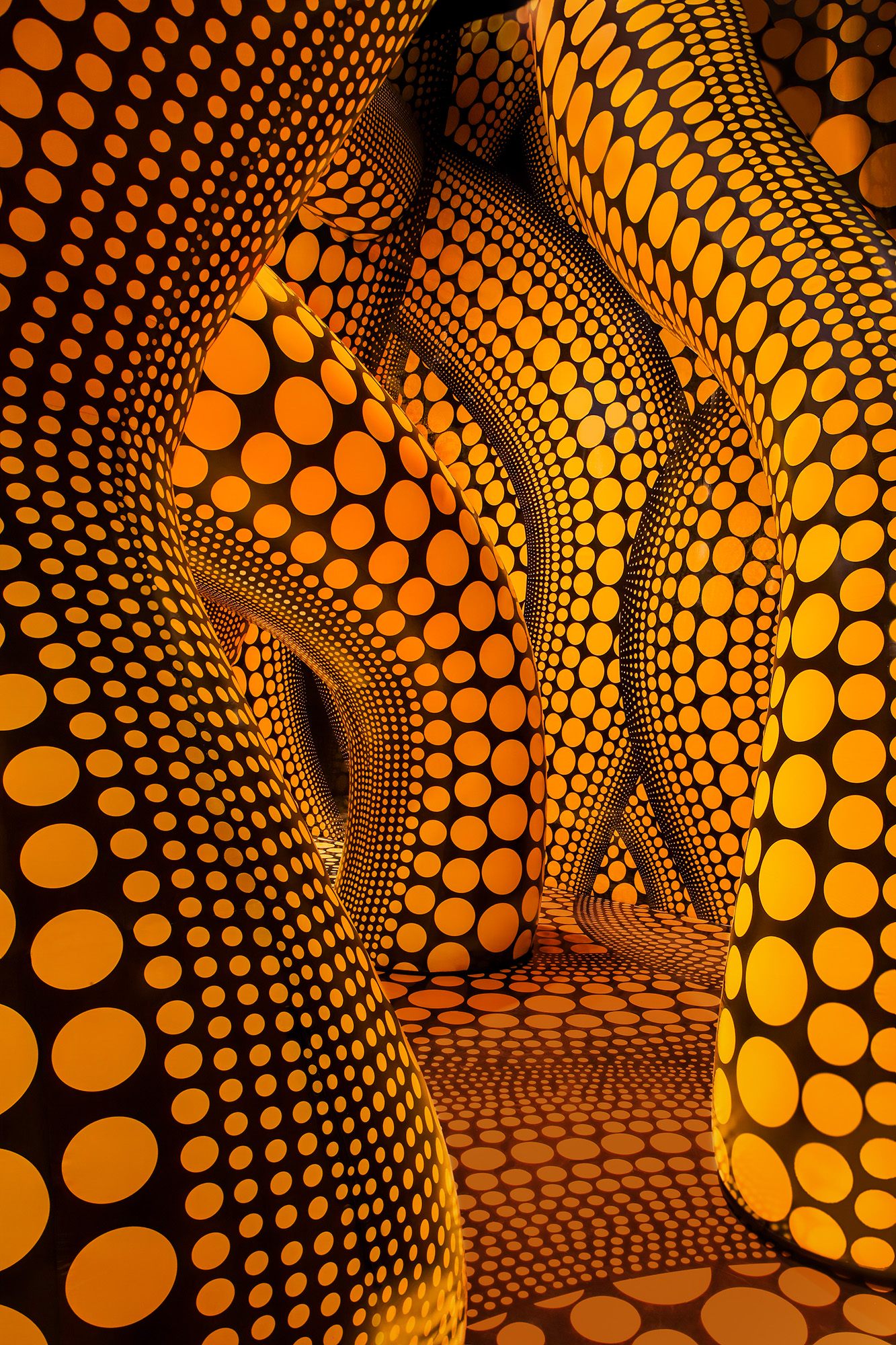

figs.iv,v,vi
Mayfield Park, a new privately owned public greenspace which opened last September hosts a more subtle and nuanced work from artist Risham Syed and director Angie Bual. The River Medlock has been opened up and weaves through the site newly landscaped by Studio Egret West, who are also urban designers and lead architects for the wider 24-acre Mayfield mixed-use project which will grow around the park. The work, Each Tiny Drop, is a response to the Medlock, using it to explore collective memory, ritual, and shared ecologies.
Audiences can pick up a small clay pot, and into it collect water which has been brought to Manchester from the Soan River in Pakistan, channelled through a dripping sculpture. Once filled, it is taken on a journey through Mayfield Park, with soundworks emerging from planting and rockeries. The floating, haunting sounds – including a poem written by the artist’s father – resonate as the water is taken towards the final staging post, another sculpture which drips into a bucket, then lowered into the Medlock from where it continues its journey, leaving Mayfield Park, into the River Irwell, then the Mersey Estuary, the Irish Sea, and then beyond, to unknown places.
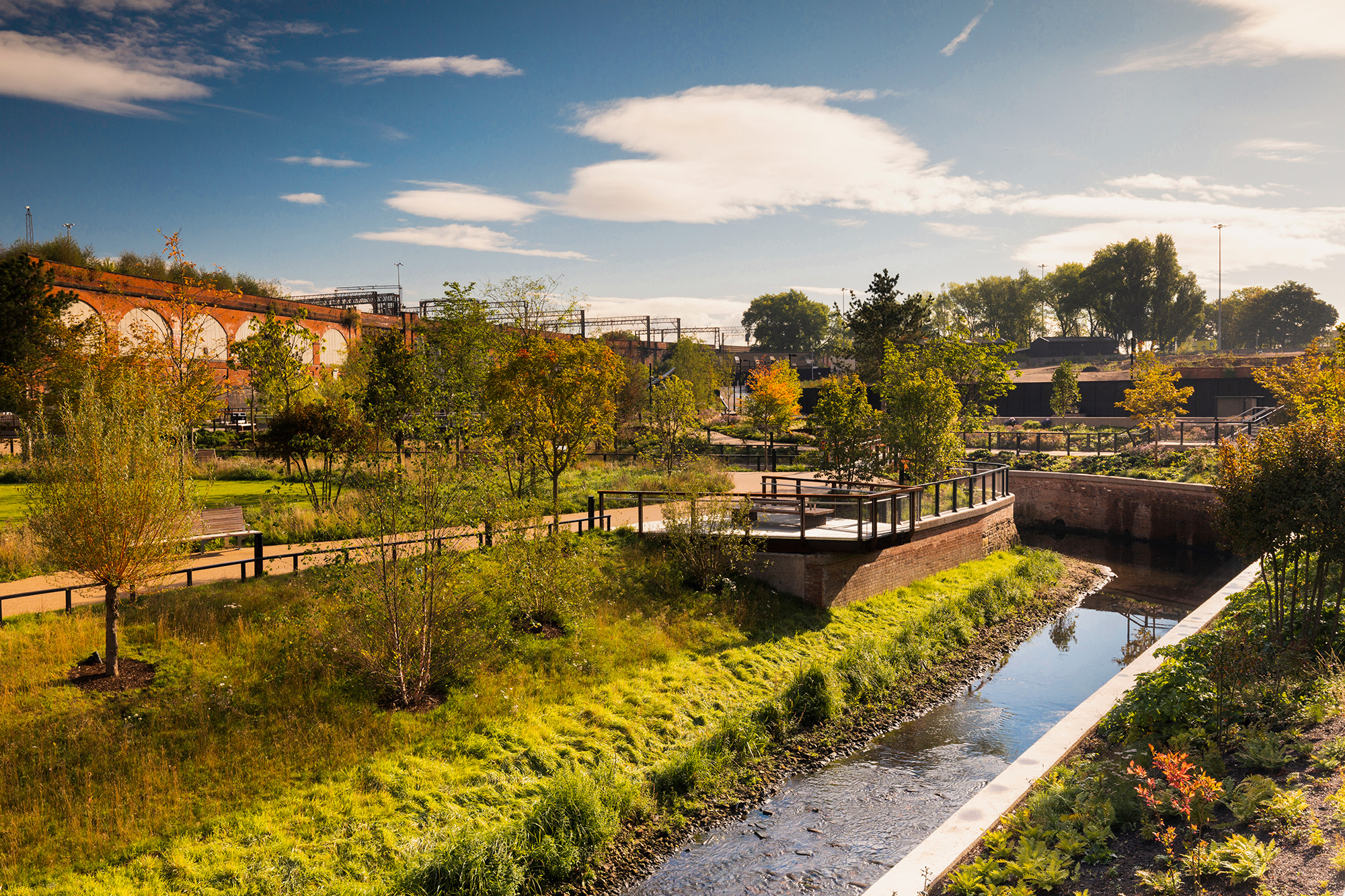
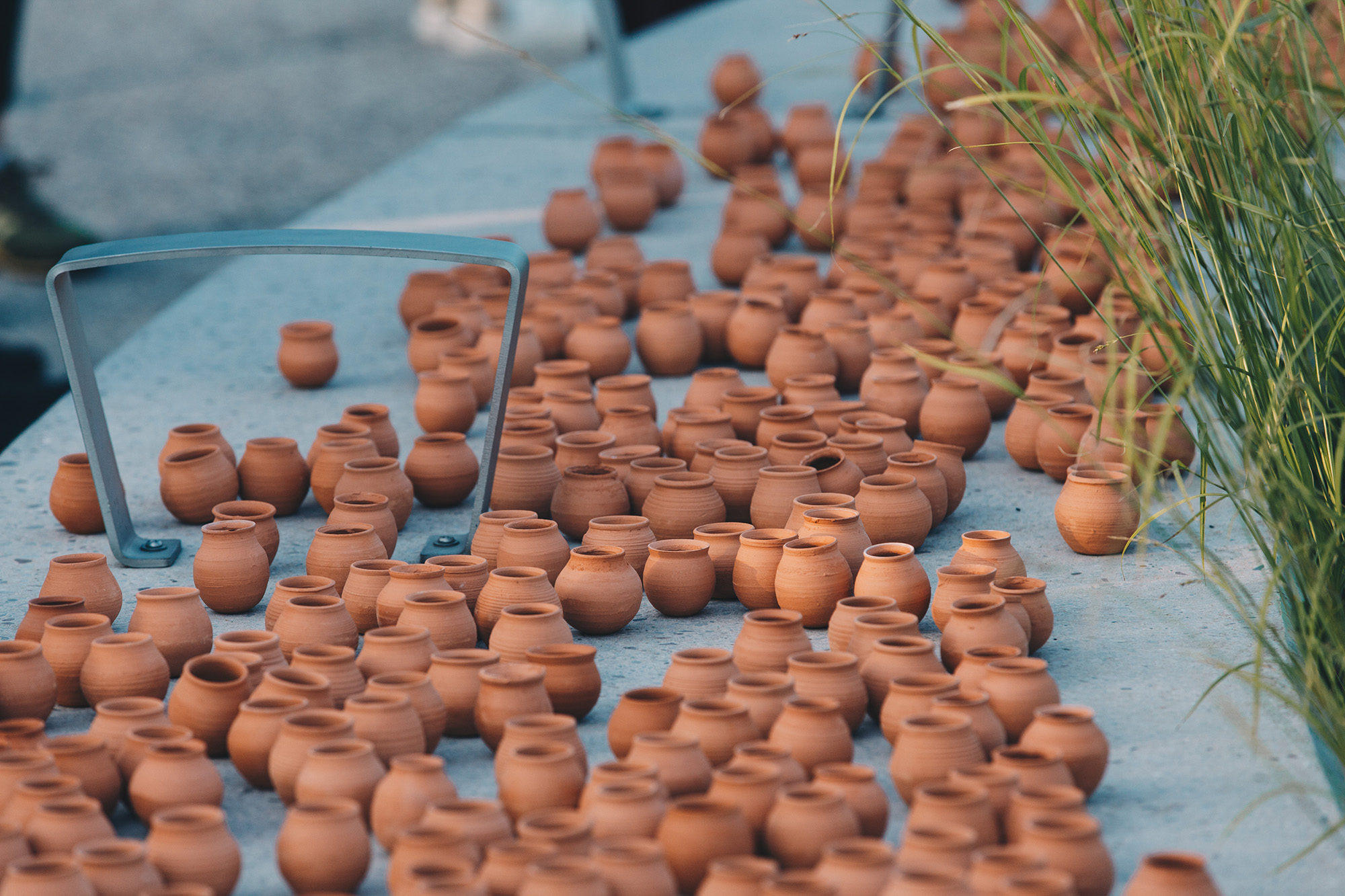

figs.vii,viii,ix
Not all the components of MIF are so responsive to urban localities, though projects are widely spread across the city in celebration of its diversity. There is a Kagami, a clever and immersive augmented reality concert from Ryuichi Sakamoto, the Japanese composer who recorded the project with production company Tin Drum shortly before he passed just a few months ago. The Whitworth, Manchester’s contemporary art gallery, hosts an exhibition Economics The Blockbuster, exploring new forms of community and exchange through art.
The same location also hosts This entry, a new “constructed situation” by artist Tino Sehgal – developed with involvement of former Manchester United footballer Juan Mata, it is a beguiling experience rooted in poise, balance, communication, craft, and unexpected intersections. Much, much more pops up at various venues around the city before the whole festival concludes on 16 July.
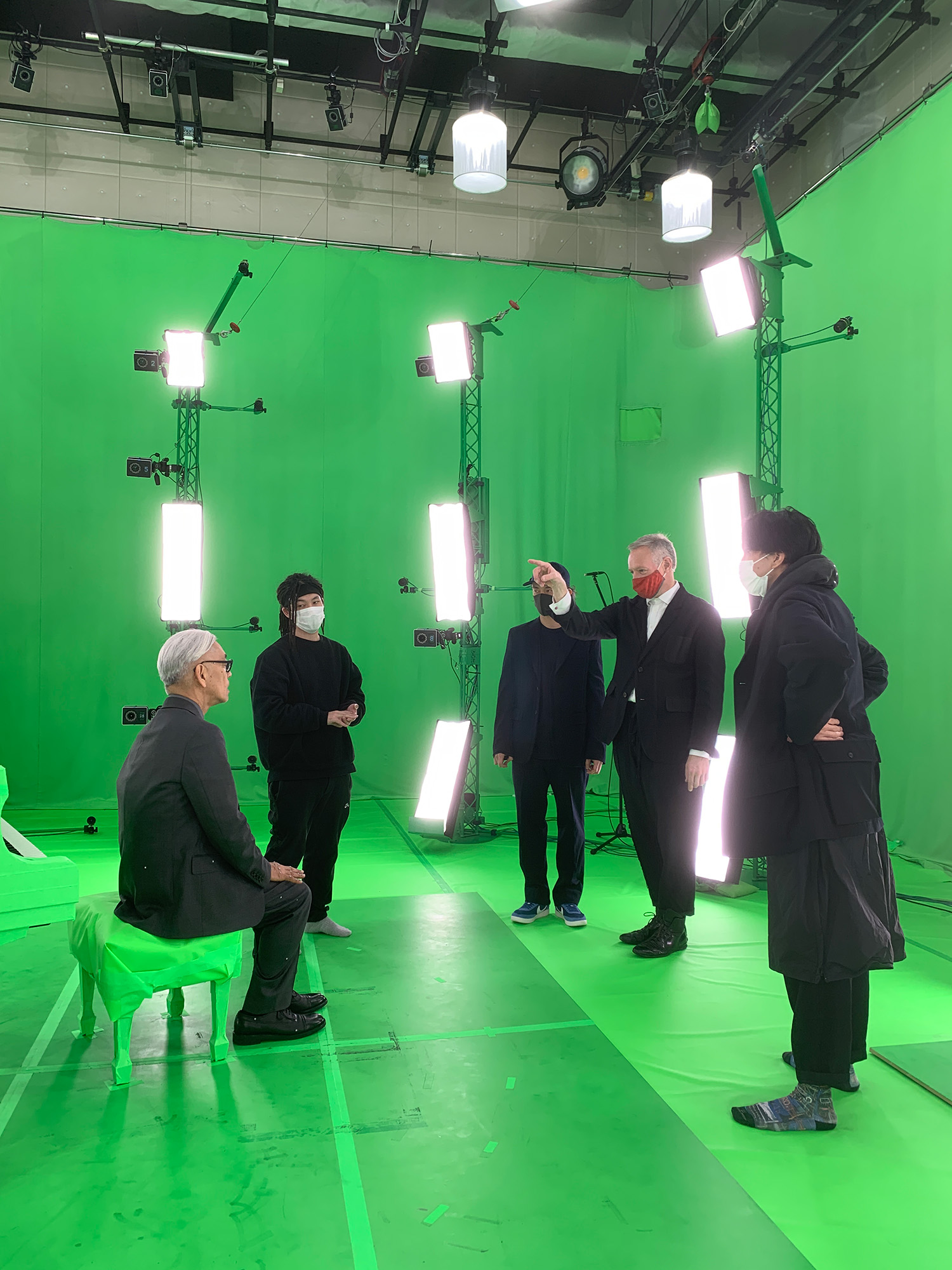
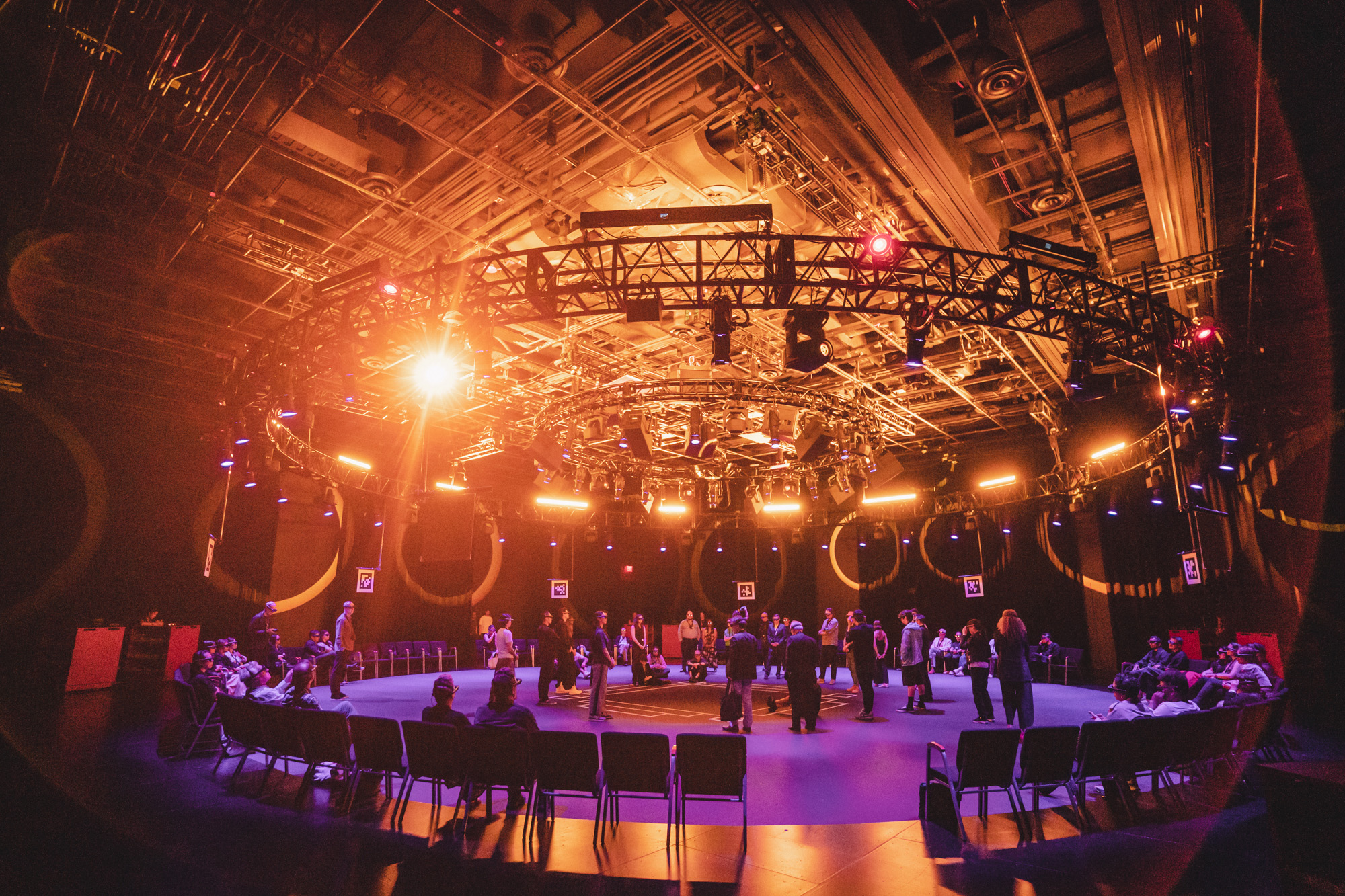

fig.x,xi,xii
Some are less formally presented. Not all work needs a stage, a gallery, or even a traditional audience. Artist Ryan Gander presents The Find, for which he has scattered 200,000 coins across the city, laying on kerbs, ledges, street furniture, or amongst planting until they are found by passers-by. The coins are tokens designed by the artist, each side presenting opposing words: pause/action solo/together, speak/listen. They suggest new forms of currency for creation of social conditions, of valuing time, care, one another, and other non-capitalist relations.
Gander tells recessed.space that there is a second, unannounced, title for the work: The Hunt. This name, however, is reserved for those in the art-know, “the 1% of the audience, people that know MIF, or they're into art, or they know my work, and they go looking for them.” For the other 99% it is The Find, the unsuspecting audience who just chance upon an encounter with contemporary art rather than hunt for it. “What's really beautiful is people engaging with contemporary art who wouldn't usually – because it's got some sort of hook that's human, sensational, romantic, whatever.”
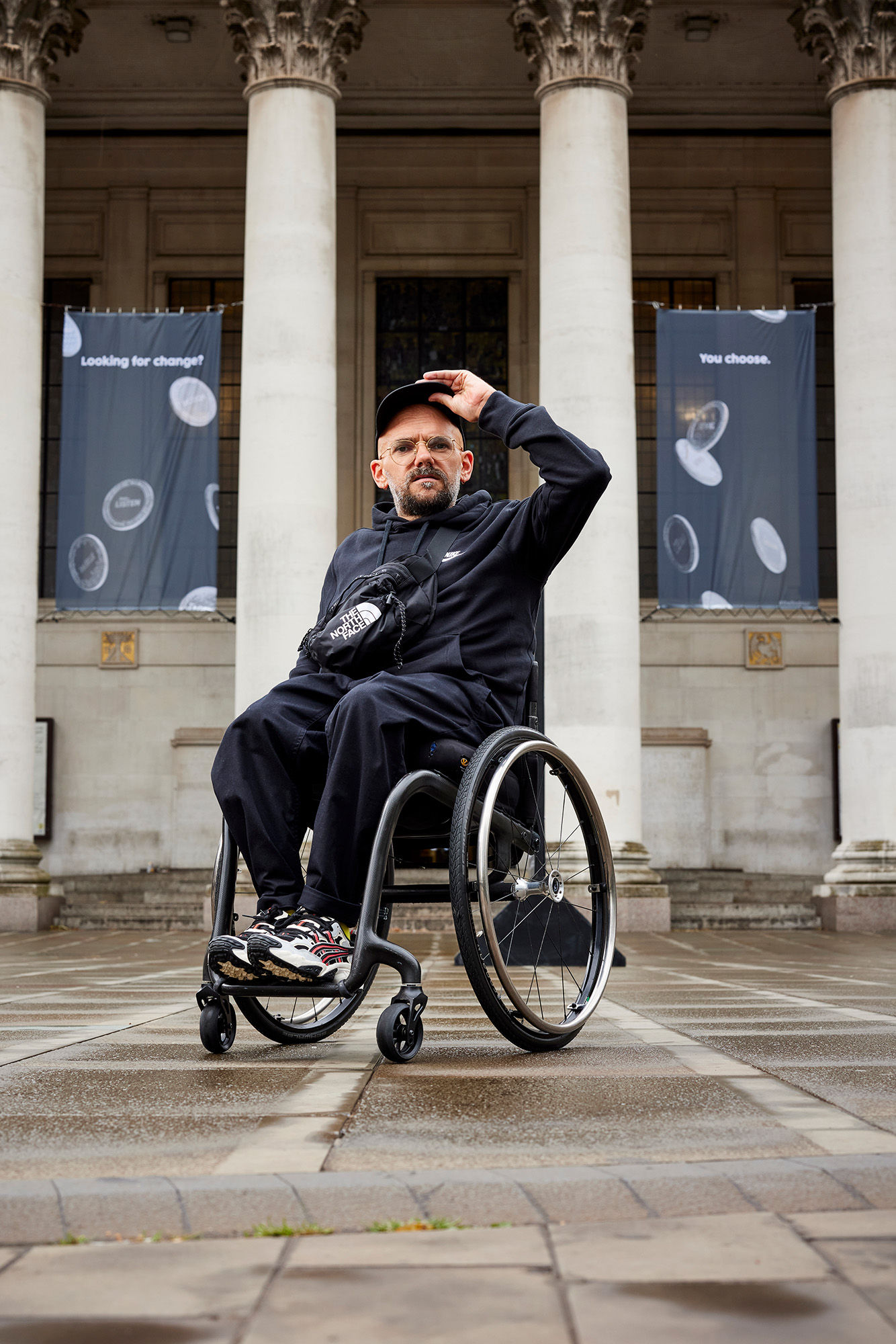

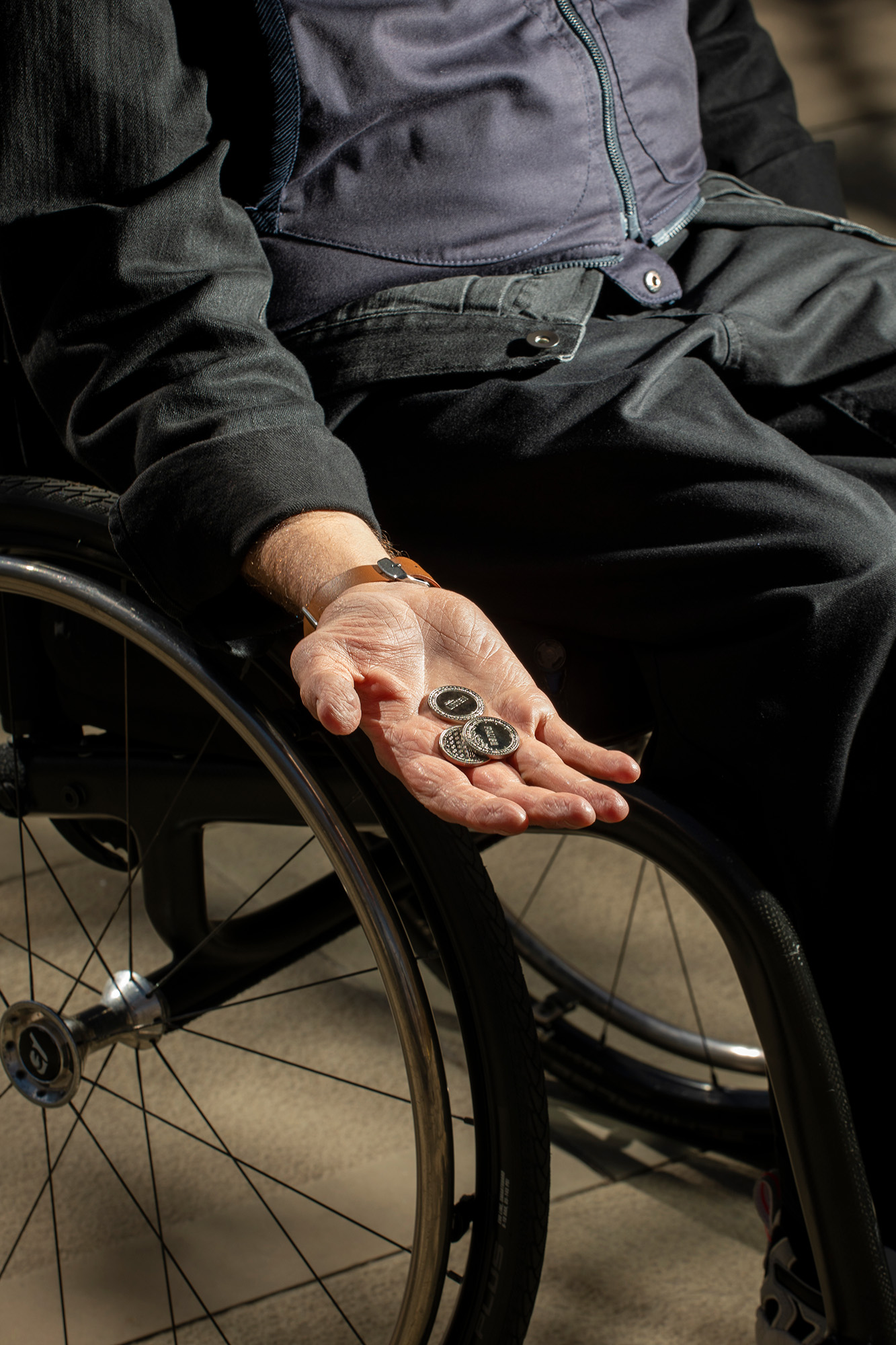
figs.xiii,xiv,xv
He hopes that people who discover the coins will keep them as curios, whether they knew they were part of a MIF commission or not, but is aware that some (perhaps hunters, not finders) will see them as art objects imbued with new value: “For some people, it becomes of monetary value, which is ludicrous.”
A vending machine in the entrance to Selfridges dispenses rocks. “They’re just rocks,” Gander says, adding that buyers of his work always ask how long a piece took to make and how unique it is, components which embed value into art market objects. But, he says, “rocks take years, and they’re unique! Rocks are the best!” Some of the rocks are signed by Gander, a geological readymade between value systems.


figs.xvi,xvii
Once Ellen Ellen van Loon’s and OMA’s Aviva Studios/The Factory/Factory International opens its doors properly, as a permanent venue hosting a range of artistic projects, MIF might change. The current explosion of events over two packed weeks every two years might be tempered by Factory hosting a relentless programme of newly commissioned, imaginative projects. The sheer force of such an enormous project covering 13,350m² and costing over £211m pounds may concentrate the gravity of MIF more around the building and less dispersed across Manchester. The cost of operating and programming such a space year-round might impact funding for the biennial event.
All this will become more apparent over forthcoming editions of MIF, but the festival has never been one thing so much as an evolving, ambitious exploration of new culture which speaks to both city and beyond. It will evolve into something else still, and though the specifics of what future MIFs look, feel, and sound like may not yet be known, it will be exciting to find out.

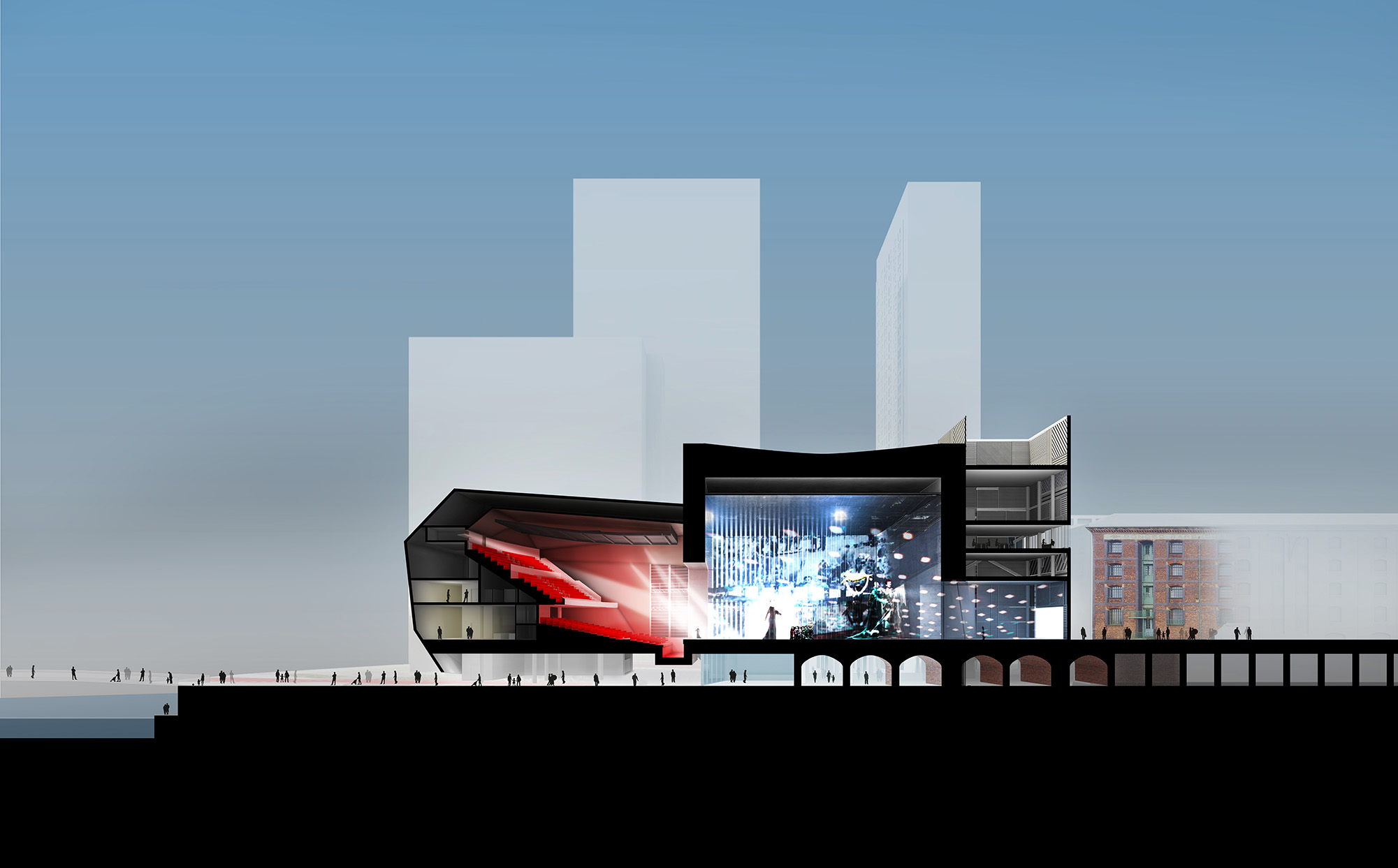
figs.xviii,xix
Manchester International Festival is one of the world’s leading arts festivals, and the first to be entirely focused on the commissioning and producing of
ambitious new work. Staged every two years in Manchester since 2007, MIF has commissioned,
produced and presented world premieres by artists including Marina Abramović, Damon Albarn,
Laurie Anderson, Björk, Boris Charmatz, Jeremy Deller, Idris Elba and Kwame Kwei-Armah, Elbow,
Tracey Emin, Akram Khan, David Lynch, Ibrahim Mahama, Wayne McGregor, Steve McQueen, Marta Minujín, Cillian Murphy, Sharmeen Obaid-Chinoy, Yoko Ono, Thomas Ostermeier, Maxine Peake,
Punchdrunk, Skepta, Christine Sun Kim, The xx, and Robert Wilson.
These and other world-renowned artists from different art forms and backgrounds create dynamic, innovative and forward-thinking new work reflecting the spectrum of performing arts, visual arts and
popular culture, staged across Greater Manchester – from theatres, galleries and concert halls to
railway depots, churches and car parks. Working closely with cultural organisations globally, whose
financial and creative input helps to make many of these projects possible, much of the work made at
MIF also goes on to travel the world, reaching an audience of 1.7 million people in more than 30
countries to date.
www.factoryinternational.org/mif23
Yayoi Kusama was born in 1929 in Matsumoto City, Nagano Prefecture. From a
young age, she experienced visual and auditory hallucinations and
began creating net and polka-dot pattern pictures. In 1957, she went to the
United States and began making net paintings and soft sculptures, as well as
organising happenings and developing installations that made use of mirrors and
lights, establishing herself as an avant-garde artist. Kusama discovered an
artistic philosophy of self-obliteration via the obsessive repetition and
multiplication of single motifs, which has informed her work throughout her
career. Yayoi Kusama started using inflatable materials in her work in 1996.
The artist represented Japan at the 45th Venice Biennale in 1993, and lives and
works in Tokyo, where the Yayoi Kusama Museum opened in October 2017.
www.yayoi-kusama.jp
Ryuichi Sakamoto was a composer, producer, artist, and
environmental activist born in Tokyo. Making his debut in 1978 with the album
Thousand Knives. Sakamoto's diverse résumé includes pioneering electronic works
in the legendary techno group Yellow Magic Orchestra, producing
globally-inspired pop albums and numerous classical compositions, two operas,
and nearly 45 original film scores for directors, including Bernardo
Bertolucci, Pedro Almodóvar, Brian De Palma, and Alejandro González Iñárritu.
His film soundtracks have won prestigious awards, including an Academy Award,
two Golden Globes, and many more. Sakamoto's activism was widespread to include
various environmental conservation efforts and promoting denuclearization and
world peace. After 3/11 in Japan, he became a strong voice of support for the
victims of the earthquake, tsunami, and nuclear meltdown in Fukushima.
www.sitesakamoto.com
www.yayoi-kusama.jp
Ryuichi Sakamoto was a composer, producer, artist, and
environmental activist born in Tokyo. Making his debut in 1978 with the album
Thousand Knives. Sakamoto's diverse résumé includes pioneering electronic works
in the legendary techno group Yellow Magic Orchestra, producing
globally-inspired pop albums and numerous classical compositions, two operas,
and nearly 45 original film scores for directors, including Bernardo
Bertolucci, Pedro Almodóvar, Brian De Palma, and Alejandro González Iñárritu.
His film soundtracks have won prestigious awards, including an Academy Award,
two Golden Globes, and many more. Sakamoto's activism was widespread to include
various environmental conservation efforts and promoting denuclearization and
world peace. After 3/11 in Japan, he became a strong voice of support for the
victims of the earthquake, tsunami, and nuclear meltdown in Fukushima.
www.sitesakamoto.com
Tin Drum is the pioneering Mixed Reality studio founded in 2016 by Todd Eckert. Tin Drumpremiered the world’s first large scale MR presentation in 2019 with Marina Abramovićand the Lifeat London’s Serpentine Galleries. In 2021 the studio premiered Medusa, a collaboration withgroundbreaking architect Sou Fujimoto presented with the London Design Festival for a sold out runto over 10,000 at the Victoria & Albert Museum
www.tindrum.io
Tin Drum is the pioneering Mixed Reality studio founded in 2016 by Todd Eckert. Tin Drumpremiered the world’s first large scale MR presentation in 2019 with Marina Abramovićand the Lifeat London’s Serpentine Galleries. In 2021 the studio premiered Medusa, a collaboration withgroundbreaking architect Sou Fujimoto presented with the London Design Festival for a sold out runto over 10,000 at the Victoria & Albert Museum
www.tindrum.io
Ryan Gander is an artist living and working in Suffolk. He
studied at Manchester Metropolitan University, UK, the Rijksakademie van
Beeldende Kunsten, Amsterdam, NL and the Jan van Eyck Akademie, Maastricht, NL. Gander has been a Professor of Visual Art at the
Universities of Huddersfield and Suffolk and holds an honorary Doctor of the
Arts at the Manchester Metropolitan University and the University of Suffolk.
In 2017, he was awarded an OBE for services to contemporary arts and in 2019 he
was awarded the Hodder Fellowship at Princeton University.
In 2022, he was made RA for the category of Sculpture. The
artist has established an international reputation through artworks that
materialise in many different forms, ranging from sculpture, apparel and
writing to architecture, painting, typefaces, publications and performance. As
well as curating exhibitions, he is a committed educator, having taught at
international art institutions and universities.
www.lissongallery.com/artists/ryan-gander
Ryan Gander is an artist living and working in Suffolk. He
studied at Manchester Metropolitan University, UK, the Rijksakademie van
Beeldende Kunsten, Amsterdam, NL and the Jan van Eyck Akademie, Maastricht, NL. Gander has been a Professor of Visual Art at the
Universities of Huddersfield and Suffolk and holds an honorary Doctor of the
Arts at the Manchester Metropolitan University and the University of Suffolk.
In 2017, he was awarded an OBE for services to contemporary arts and in 2019 he
was awarded the Hodder Fellowship at Princeton University.
In 2022, he was made RA for the category of Sculpture. The
artist has established an international reputation through artworks that
materialise in many different forms, ranging from sculpture, apparel and
writing to architecture, painting, typefaces, publications and performance. As
well as curating exhibitions, he is a committed educator, having taught at
international art institutions and universities.
www.lissongallery.com/artists/ryan-gander
Risham Syed is a visual artist and an educationist. She is
the Head of Fine Arts Department at the School of Visual Arts & Design,
Beaconhouse National University, Lahore, Pakistan. Risham has a diverse art
practice in which painting and other mediums are employed to explore questions
of history, sociology, and politics.
Her native city plays a pivotal role in her work, as do
related inquiries into what the colonial history of the region means to today’s
global south. She explores these questions using her painting as pieces of a
greater, often global context through installation and engages objects,
borders, margins, frames with social reference and connotation. Her use of
fabric, embroidery, found objects, along with her painting speak about her
connection with the personal, as well as historical, weaving in history with
the present moment. Risham has shown extensively in major national and
international exhibitions including the Jameel Arts Center, Dubai; Manchester
Art Gallery, Manchester; ABRAAJ Capital Art Prize, Dubai; Whitworth Art
Gallery, Manchester; Asia Pacific Triennial, Brisbane; Hangzhou Triennial of
Fiber Art, China; Mohatta Palace Museum, Karachi; National Gallery of Art,
Islamabad; National Gallery of Modern Art, Mumbai; Harris Museum, Preston,
Barbican Center; London and the Fukuoka Triennial, Japan.
www.rishamsyed.net
Risham Syed is a visual artist and an educationist. She is
the Head of Fine Arts Department at the School of Visual Arts & Design,
Beaconhouse National University, Lahore, Pakistan. Risham has a diverse art
practice in which painting and other mediums are employed to explore questions
of history, sociology, and politics.
Her native city plays a pivotal role in her work, as do
related inquiries into what the colonial history of the region means to today’s
global south. She explores these questions using her painting as pieces of a
greater, often global context through installation and engages objects,
borders, margins, frames with social reference and connotation. Her use of
fabric, embroidery, found objects, along with her painting speak about her
connection with the personal, as well as historical, weaving in history with
the present moment. Risham has shown extensively in major national and
international exhibitions including the Jameel Arts Center, Dubai; Manchester
Art Gallery, Manchester; ABRAAJ Capital Art Prize, Dubai; Whitworth Art
Gallery, Manchester; Asia Pacific Triennial, Brisbane; Hangzhou Triennial of
Fiber Art, China; Mohatta Palace Museum, Karachi; National Gallery of Art,
Islamabad; National Gallery of Modern Art, Mumbai; Harris Museum, Preston,
Barbican Center; London and the Fukuoka Triennial, Japan.
www.rishamsyed.net
Angie Bual is the artistic director and founder of Trigger, an
independent arts organisation based in Bristol. She is the Creative Director of
The Hatchling–the world’s first flying puppet in the form of a dragon which
premiered in Plymouth UK in August 2021 and led the Queen’s Platinum Jubilee
celebrations in 2022. Angie is also the Creative Director of PoliNations, a
major cultural event celebrating diversity and migration through the UK’s
people and plants; and With You, a free innovative digital service that enables
families to send voice messages and music playlists to loved ones isolated in
hospital or care.
Angie is a Clore Fellow (Theatre), and has
produced for organisations including Fuel, National Theatre of Scotland,
Edinburgh Art Festival and the Science Museum. She is also on the board for the
London AreaCouncil for Arts Council England. Angie won the Creative Producer
Arts Foundation Award.
Angie Bual is the artistic director and founder of Trigger, an
independent arts organisation based in Bristol. She is the Creative Director of
The Hatchling–the world’s first flying puppet in the form of a dragon which
premiered in Plymouth UK in August 2021 and led the Queen’s Platinum Jubilee
celebrations in 2022. Angie is also the Creative Director of PoliNations, a
major cultural event celebrating diversity and migration through the UK’s
people and plants; and With You, a free innovative digital service that enables
families to send voice messages and music playlists to loved ones isolated in
hospital or care.
Angie is a Clore Fellow (Theatre), and has
produced for organisations including Fuel, National Theatre of Scotland,
Edinburgh Art Festival and the Science Museum. She is also on the board for the
London AreaCouncil for Arts Council England. Angie won the Creative Producer
Arts Foundation Award.
Tino Sehgal creates installations k︎nown as “constructed situations” – drawing on his studies in political economy in Berlin and dance at the Folk︎wang University of the Arts in Essen, Germany. His work as an artist focuses on the gestures and subtleties of social encounters, valuing participation and interaction over material objects.
www.mariangoodman.com/artists/62-tino-sehgal
Tino Sehgal creates installations k︎nown as “constructed situations” – drawing on his studies in political economy in Berlin and dance at the Folk︎wang University of the Arts in Essen, Germany. His work as an artist focuses on the gestures and subtleties of social encounters, valuing participation and interaction over material objects.
www.mariangoodman.com/artists/62-tino-sehgal
Juan Mata is a World Cup and Champions League winning
footballer and the founder of the charitable movement Common Goal. He currently
plays for Galatasaray, who he joined this season after 8 years at Manchester
United. In 2021, he was a UEFA Equal Game Award recipient and was previously
made The Guardian’s footballer of the year for his achievements on and off the
pitch.
www.juanmata8.com
Juan Mata is a World Cup and Champions League winning
footballer and the founder of the charitable movement Common Goal. He currently
plays for Galatasaray, who he joined this season after 8 years at Manchester
United. In 2021, he was a UEFA Equal Game Award recipient and was previously
made The Guardian’s footballer of the year for his achievements on and off the
pitch.
www.juanmata8.com
The Whitworth is proudly part of The University of Manchester, operating as a convening space between the University and the people of the city. It was founded in 1889 as The Whitworth Institute and Park in memory of the industrialist Sir Joseph Whitworth for 'the perpetual gratification of the people of Manchester' and continues this mission today in new contexts.
www.whitworth.manchester.ac.uk
The Whitworth is proudly part of The University of Manchester, operating as a convening space between the University and the people of the city. It was founded in 1889 as The Whitworth Institute and Park in memory of the industrialist Sir Joseph Whitworth for 'the perpetual gratification of the people of Manchester' and continues this mission today in new contexts.
www.whitworth.manchester.ac.uk
visit
Manchester International Festival 23 runs until 16 July. Further information, as well as information on all projects mentioned here and more, is available at:
www.factoryinternational.org/mif23
images
fig.i Construction photo of Aviva Studios which will be the new home of Factory International, Manchester, UK. June 2023 © Pawel Paniczko.
fig.ii First Breath at Aviva Studios, Jan 2023.
©
Tomasz Kozak.
fig.iii
Installation view from Manchester International Festival 2023 exhibition ‘Yayoi Kusama: You, Me and the Balloons’ at Aviva Studios. Images © David Levene.
fig.iv
A Bouquet of Love I Saw in the Universe, 2021 Installation view from Manchester International Festival 2023 exhibition ‘Yayoi Kusama/ You, Me and the Balloons’ at Aviva Studios. Images © David Levene.
fig.v
Dots Obsession, 2013 Installation view from Manchester International Festival 2023 exhibition ‘Yayoi Kusama/ You, Me and the Balloons’ at Aviva Studios. Images © David Levene.
fig.vi Yayoi Kusama, The Hope of the Polka Dots Buried in Infinity will Eternally Cover the Universe, 2019. Installation view, Fosun Foundation, Shanghai. Courtesy of Ota Fine Art.
fig.vii
Each Tiny Drop at Manchester International Festival 2023 - image
©
Priti Shikotra.
fig.viii Mayfield Park.
©
Lee Baxter.
fig.ix
Each Tiny Drop at Manchester International Festival 2023 - image
©
Priti Shikotra.
fig.x Tino Sehgal, Juan Mata, and team,
©
David Levene.
fig.xi Alook at the collaborative process behind KAGAMI. Ryuichi Sakamoto, director Todd Eckert, and the Rhizomatiks Tokyo Capture team from the final day of dimensional photography, Dec. 16, 2020. Courtesy of Tin Drum.
fig.xii Kagami.
Courtesy of Tin Drum.
fig.xiii Ryan Gander The Find at Manchester International Festival 2023. Image
© David Levene.
fig.xiv The Find by Ryan Gander, Commissioned and produced by Factory International for Manchester international Festival.
fig.xv
The Find by Ryan Gander, Commissioned and produced by Factory International for Manchester international Festival.
Image © Lee Baxter.
fig.xvi
Aviva Studios, Home of Factory International. Image by OMA.
fig.xvii
Construction photo of Aviva Studios which will be the new home of Factory International, Manchester, UK. Sept 2022 © Pawel Paniczko.
fig.xviii Aviva Studios Render. Image by OMA.
fig.xix Aviva Studios Render. Image by Luxigon.
publication date
04 July 2022
tags
Aviva Studios, Angie Bual, Art centre, Biennial, Currency, Economics, Factory International, Ryan Gander, Will Jennings, Manchester, Manchester International Festival, Juan Mata, Mayfield Park, OMA, Pumpkins, Ritual, River Medlock, Performance, Ryuichi Sakamoto, Soan River, Studio Egret West, Risham Syed, Tentacles, The Factory, Tin Drum, Tino Sehgal, Yayoi Kusama, Ellen van Loon, Water, Whitworth
www.factoryinternational.org/mif23


